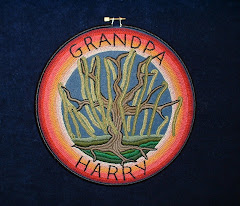Now the New Year has arrived, I’m preparing for the Iowa Legislature to convene. And surveying the preliminary media coverage, it looks like the usual battle over taxes vs. spending. The rub this year is an $800 million budget surplus.
Many of our state’s Republican legislators are set to give that money back to the taxpayers in the form of tax cuts, even though the surplus is largely the result of major cutbacks in state services.
But of course there’s the question of which taxpayers benefit. Will cuts benefit working Iowans who really have tightened their belts? Or will it be turned over to corporate interests under the guise of stimulating economic growth? I’ve been hearing about tax cuts stimulating economic growth since I was a kid, and I’m still waiting.
Ronald Reagan promised the miracles of supply-side or trickle-down economics when I was finishing high school. Those tax cuts led to a huge deficit when he left office in 1989. Yet I heard the same thing from state legislators when I served as a school board director after my return to Iowa in 2001. Instead of maintaining a reliable revenue stream to adequately fund state services like education, legislators were more concerned with cutting taxes, often via tax exemptions or deductions for special interests.
This left local public officials like me the task of making up the difference either by cutting services or asking for local tax increases – in most cases via property taxes.
And we’ve all seen the results of the cuts – personnel and positions eliminated in our schools; county services consolidated, limited or discontinued. It’s the flip side of the cutting taxes to create prosperity coin – cutting taxes means less services for the public. The real question is who really prospers from those cuts?
Too often I’ve found it means fatter profits for corporations who’ve used the tax issue as leverage to settle in our state. And as many communities can attest, that doesn’t mean these corporations will stay.
No, my research throughout the last 30 years has indicated that tax cuts, especially on the upper income brackets and corporations do little to stimulate growth. In fact, some of America’s periods of greatest growth were when taxes were much higher than the current rates. Those taxes built the infrastructure we benefit from today. Unfortunately, too many taxpayers accept the line that all taxes and government spending are bad.
One of the most recent studies of income tax rates by the Congressional Research Service [http://tpmdc.talkingpointsmemo.com/PDF/0915taxesandeconomy.pdf] concluded: “The results of the analysis suggest that changes over the past 65 years in the top marginal tax rate and the top capital gains tax rate do not appear correlated with economic growth. The reduction in the top tax rates appears to be uncorrelated with saving, investment, and productivity growth.”
So as our state legislators prepare to debate what to do with Iowa’s budget surplus, I hope citizens will pay attention and ask, “Who’s going to benefit?”
Personally, I’d like to see that money reinvested in Iowa to rebuild infrastructure and restore funding to agencies and services previously cut, like education. And instead of more tax cuts, I’d like to see us bring in more revenue by closing corporate tax loopholes.
This year, let’s not fall for the usual “tax cuts stimulate growth” line.
Monday, January 28, 2013
Monday, January 7, 2013
Look at whole picture to solve violence problem
Since the Newtown, Conn. school shooting, I’ve observed you cannot say the phrase “gun control” without someone launching a hissy fit about Second Amendment Rights and regulations leading to all guns being banned.
Calm down, people.
First, let’s admit we have a problem with violence in this country, and gun violence is part of that. When guns are everywhere (and they are), they become part of the problem. As researchers at Harvard found, more guns equal more homicide. http://www.hsph.harvard.edu/research/hicrc/firearms-research/guns-and-death/index.html
Next, let’s be honest about the fact that we’re looking for a solution – any solution. And human nature being what it is, we want that solution to be simple. Just give us the Staples “Easy” button.
It ain’t gonna happen. Did your parents ever tell you life was simple? Or as I like to ask, “Do you see in color?”
See, I studied drawing, which is really the practice of observing, analyzing and problem solving to create, in traditional studio drawing, a two-dimensional depiction of three-dimensional objects. One of the first things you learn is you can’t create a realistic depiction with only black and white. The two extremes alone create an abstraction.
So, you introduce every shade of gray from black to white. With the full range of values, you can create an amazing reproduction of reality.
Except, to complicate things further, we also see in color.
The gun “control” battle is like that. We want to blame one thing for events like the Sandy Hook massacre: guns; mentally ill, crazy or evil people; poor mental healthcare; violent video games and movies; unequal economic opportunity . . . and so on.
But reality is more complicated. The ugly truth is probably that ALL these things contribute to violence in America. Unfortunately, as a consumer society, we’ve had black/white, either/or dichotomies sold to us via infotainment and advertising – to the point we accept them as reality.
As Exhibit A, I give you our Congressional Republicans who determined, with the help of Newt Gingrich in the 90s, Democrats are the enemy. Perhaps this is why Congress can’t pass a budget.
And as Exhibit B, I’d present gun control. Or perhaps it might be better to call it public safety.
Because that’s really the issue – how can we keep each other safe in a society that values, and in many places, needs its guns? How do we balance public safety with regulations to ensure responsible gun ownership?
A full range of options exist, from registration and liscensure, limits on certain types of weapons, buy-back programs, etc. -- or everything from black to white. I like Iowa author Jane Smiley’s suggestion to require liability insurance on guns. She writes: “According to the Public Services Research Institute ‘the average cost of a gunshot related death is $33,000, while gun-related injuries total more than $300,000 for each occurrence,’ some 4.7 billion smackers every year. You and I are paying for most of these costs.”
Smiley has a couple of other suggestions worth reading, too, as she kicks off this conversation. [http://www.huffingtonpost.com/jane-smiley/a-few-remedies-for-the-ri_b_2323494.html?utm_hp_ref=fb&src=sp&comm_ref=false]
Solving this problem will mean calming down and talking to each other.
It will mean balancing individual rights of gun ownership with the common good of public safety. As Smiley notes, there are remedies, if you’re willing to see them.
So I repeat, “Do you see in color?”
Calm down, people.
First, let’s admit we have a problem with violence in this country, and gun violence is part of that. When guns are everywhere (and they are), they become part of the problem. As researchers at Harvard found, more guns equal more homicide. http://www.hsph.harvard.edu/research/hicrc/firearms-research/guns-and-death/index.html
Next, let’s be honest about the fact that we’re looking for a solution – any solution. And human nature being what it is, we want that solution to be simple. Just give us the Staples “Easy” button.
It ain’t gonna happen. Did your parents ever tell you life was simple? Or as I like to ask, “Do you see in color?”
See, I studied drawing, which is really the practice of observing, analyzing and problem solving to create, in traditional studio drawing, a two-dimensional depiction of three-dimensional objects. One of the first things you learn is you can’t create a realistic depiction with only black and white. The two extremes alone create an abstraction.
So, you introduce every shade of gray from black to white. With the full range of values, you can create an amazing reproduction of reality.
Except, to complicate things further, we also see in color.
The gun “control” battle is like that. We want to blame one thing for events like the Sandy Hook massacre: guns; mentally ill, crazy or evil people; poor mental healthcare; violent video games and movies; unequal economic opportunity . . . and so on.
But reality is more complicated. The ugly truth is probably that ALL these things contribute to violence in America. Unfortunately, as a consumer society, we’ve had black/white, either/or dichotomies sold to us via infotainment and advertising – to the point we accept them as reality.
As Exhibit A, I give you our Congressional Republicans who determined, with the help of Newt Gingrich in the 90s, Democrats are the enemy. Perhaps this is why Congress can’t pass a budget.
And as Exhibit B, I’d present gun control. Or perhaps it might be better to call it public safety.
Because that’s really the issue – how can we keep each other safe in a society that values, and in many places, needs its guns? How do we balance public safety with regulations to ensure responsible gun ownership?
A full range of options exist, from registration and liscensure, limits on certain types of weapons, buy-back programs, etc. -- or everything from black to white. I like Iowa author Jane Smiley’s suggestion to require liability insurance on guns. She writes: “According to the Public Services Research Institute ‘the average cost of a gunshot related death is $33,000, while gun-related injuries total more than $300,000 for each occurrence,’ some 4.7 billion smackers every year. You and I are paying for most of these costs.”
Smiley has a couple of other suggestions worth reading, too, as she kicks off this conversation. [http://www.huffingtonpost.com/jane-smiley/a-few-remedies-for-the-ri_b_2323494.html?utm_hp_ref=fb&src=sp&comm_ref=false]
Solving this problem will mean calming down and talking to each other.
It will mean balancing individual rights of gun ownership with the common good of public safety. As Smiley notes, there are remedies, if you’re willing to see them.
So I repeat, “Do you see in color?”
Labels:
gun control,
Newtown,
NRA,
public safety,
Sandy Hook,
Second Amendment,
violence
Subscribe to:
Comments (Atom)








